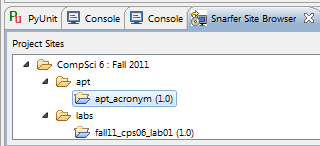
Use the Ambient Snarfer Site window and choose one of the APTs you want to snarf as shown in the screen capture below. There I chose apt_acronym.

After snarfing the APT, you can see it and the source files that come with it.
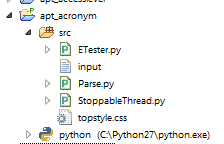
Every APT you snarf will have
several files in the src folder including python modules
ETester.py,
Parse.py, and
StoppableThread.py. These are part of the APT testing
framework and you can ignore them (except for
ETester.py which you'll run as shown below).
DO NOT MODIFY any of these files.
You'll need to create a Python module that's specific to the APT you're doing. Click on the src folder and select "new", "Python Module". It is important that the file name is exactly as it appears on the APT page. In this case the the specs on the APT page for this problem state that the APT module should be called CreateAcronym. Note you can leave the Package blank and type the name of the module where it says "Name". Note you do not need to add the .py extension as it is added automatically.
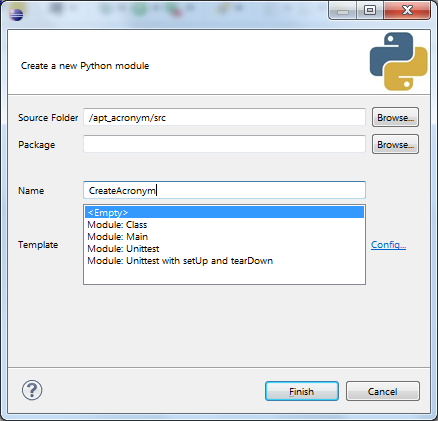
In the
screen capture below you can see that I've started code for
CreateAcronym.py
in the snarfed project and I'm ready to test a simple (and wrong) implementation.
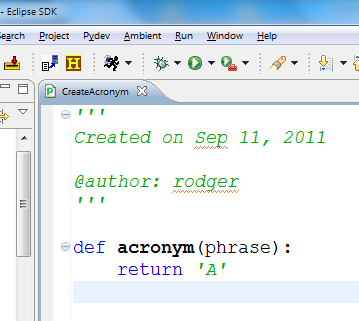
Instead of running CreateAcronym.py you need to run the
module
ETester.py which will all the code you wrote in
CreateAcronym.py. For every APT you implement in Eclipse,
you'll run ETester.py to test the module and function
you wrote for the APT. The ETester.py module you
snarf is specific to the APT you're doing. To run, click and
highlight
Etester.py and select "Run as", "Python Run".
Running ETester.py will generate two new files in the
src folder. One called results.html
and
one called perc. To see these in the folder you may need to
select src and right-click and select Refresh. I did this and
notice these new files now in the src folder.
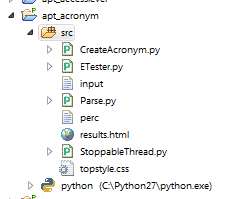
Then you can
simply click on the results.html file to see your
results. In the screen shot below I can see some I got correct
(green)
and some I got wrong (red).
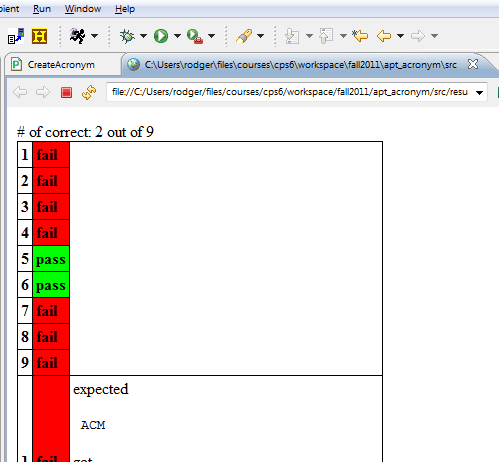
If you scroll further down you will see more information as shown below. Here for test case 4, the input was the string "A B C", the expected answer was "ABC" and my program got the incorrect answer "A". Test case 5 shows that I got the correct answer.
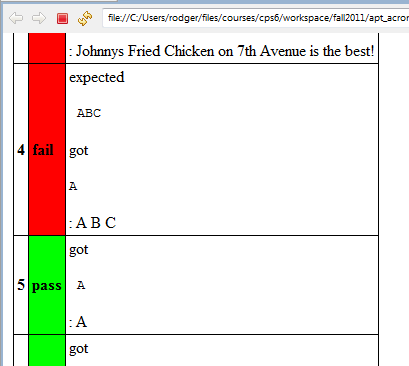
After fixing your code, save the file, run ETester.py
and then you may have to refresh the results in src again to see the
new results. The goal is to get all green!